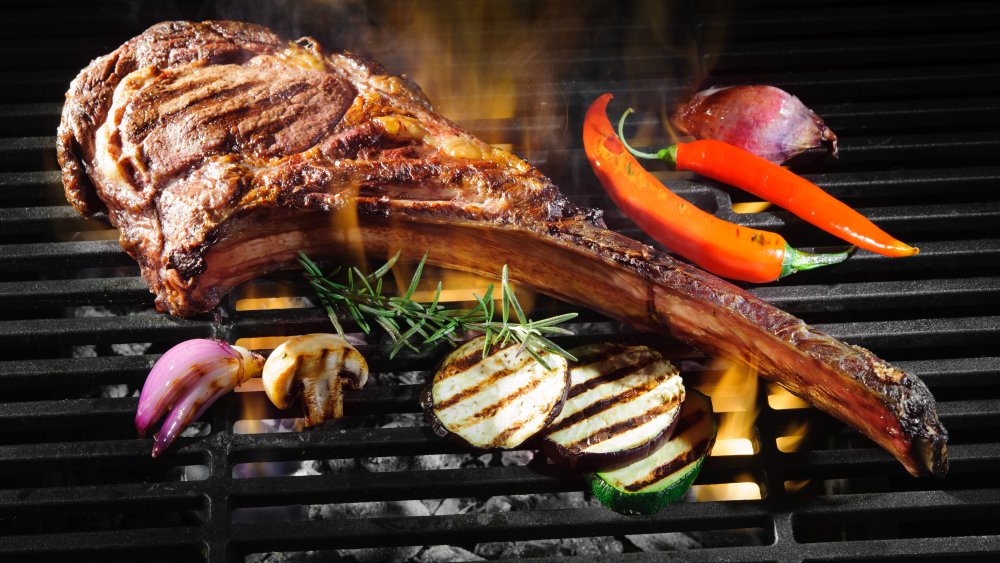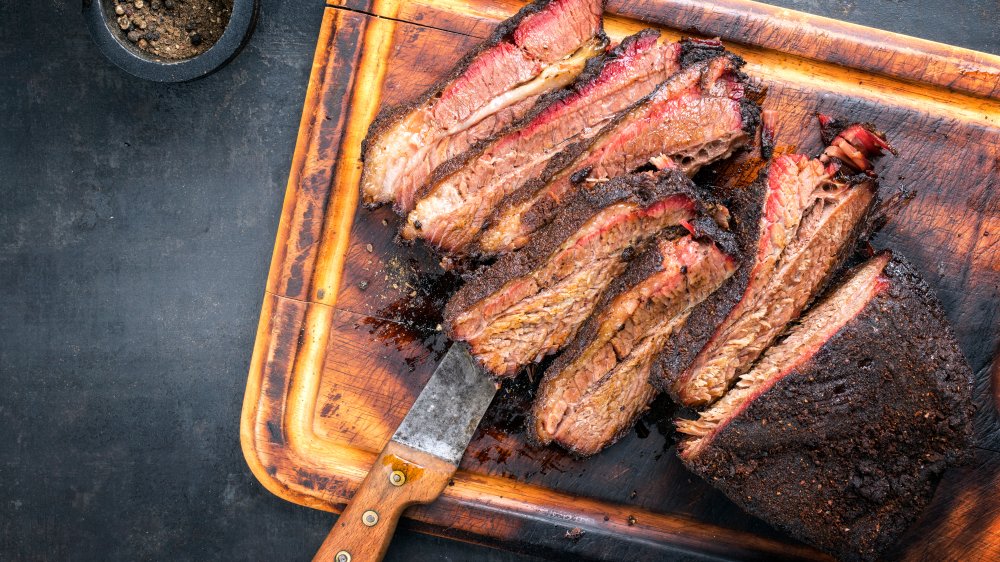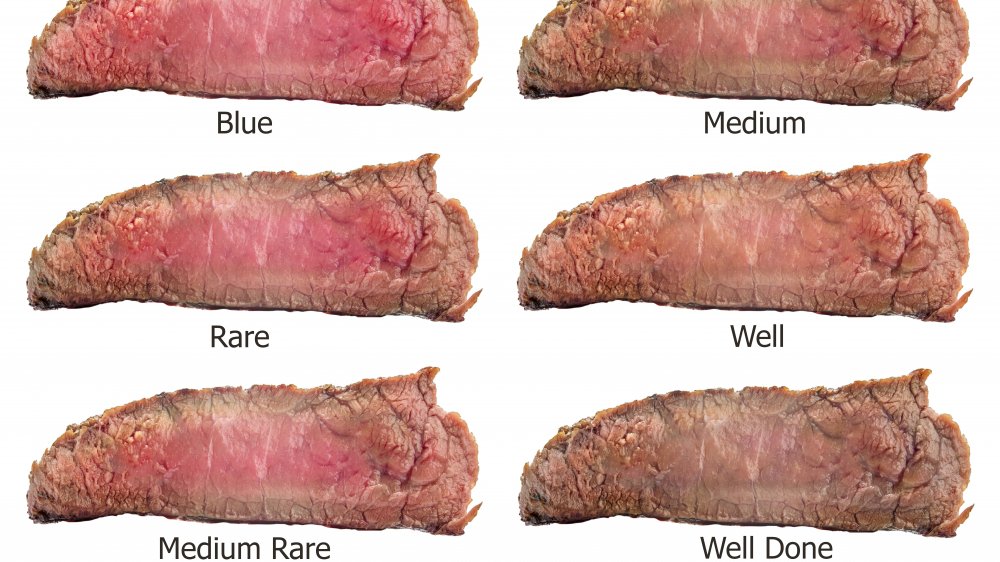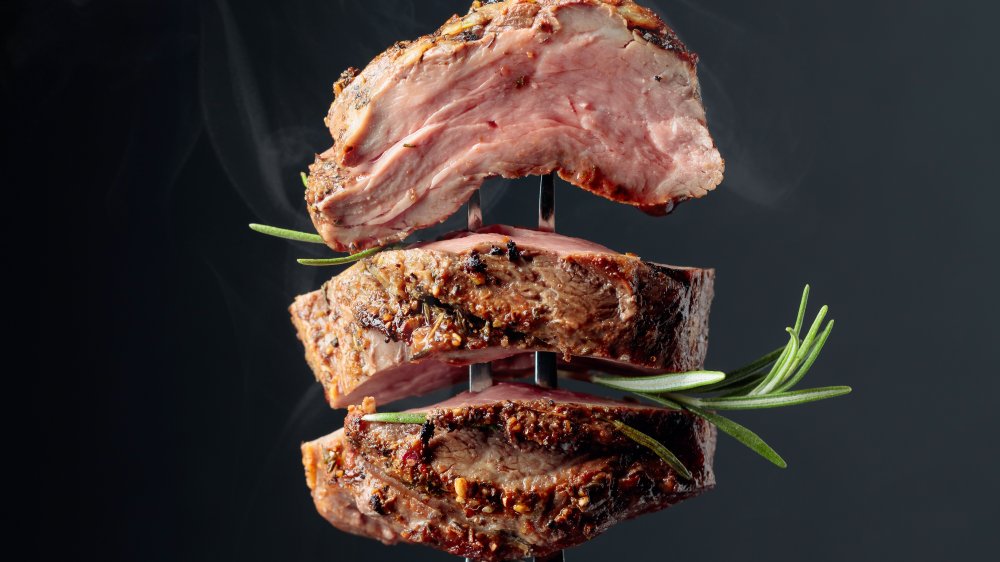Sneaky Ways Steakhouses Are Scamming You
Fans of all things beef might occasionally walk into a steakhouse wanting to know what a massage tastes like. If that sentence reads like it was brought to you by copious amounts of alcohol, it was, but not in the way you might think. That oral curiosity is about Wagyu beef, which is an admittedly redundant expression. As the Japan Times points out, the term "Wagyu" technically just means "Japanese beef," a special subset of which is Kobe beef. But the implications of those labels run much deeper.
The romanticized concept of Waygu begins with a bovine that's been spoiled rotten — as in pampered, not actually rotten. Supposedly, the animal receives daily massages and exclusively consumes Sapporo beer. But as Vice describes in an article combatively titled, "Don't Massage My Meat," the mythos surrounding luxury steak — considered on par with caviar and truffles -— is udderly based on lies. The booze and belly rubs are mostly fiction. In fact, restaurants might be lying about the supposed bovine ambrosia on your plate so shamelessly that it's a minor miracle they haven't burned down from all the pants-on-fire lying. There's a good chance that you're getting an entirely different, inferior product. And that's not the only way steakhouses may totally hose customers.
The beef you should have with Kobe
In 2012, Forbes contributor Larry Olmsted called Kobe beef at U.S. restaurants "food's biggest scam," noting that prior to 2010, the U.S. could only buy boneless fresh beef from Japan, none of which was Kobe. Steakhouses promising Kobe were selling deception at a premium. After that point, there was a blanket ban on importing Japanese beef. Since, then, traces of Kobe have trickled into the U.S. market, said Olmsted in 2014, but in the years that followed, the chicanery continued.
What makes this deception extra-insidious is how expensive it is. A 2016 investigation by Inside Edition noted that Kobe beef sold for as much as $55 an ounce back then. Only 400 pounds of it entered the country monthly, but there was a ton of expensive bull going around at steakhouses. For instance, the renowned Old Homestead Steakhouse charged between $175 and $350 for what the Kobe Beef Association identified as bogus Kobe beef — or "Faux-be" beef, as Town & Country called it. When pressed on the matter, the owner reportedly responded, "You're getting hung up on what the name is." By contrast, customers might have been getting hung out to dry like aged beef.
Three-star Michelin restaurant Le Bernardin, also located in the Big Apple, charged $110 for what it advertised as Kobe beef. But when asked to show the Kobe beef certification, the manager vanished, much like the credibility of many steakhouses.
Not well-done vs. not done well
Medium-rare beef has an internal temperature of 135 degrees after resting, per New York Post contributor Steve Cuozzo. Chefs tend to consider it the ideal temperature for maintaining flavor and tenderness. Of course, people make mistakes and may over- or undercook beef. As Henry at Life Hotel owner Stephen Hanson points out, what's well-done can't be undone, forcing a restaurant to feed that beef to the garbage. That's obviously costly. The alternative would be to err on the side of coolness. After all, the chef can just toss undercooked meat back onto the grill.
Cuozzo argued in 2018 that these cost concerns prompted restaurants to adopt the nasty habit of "cooking your steak wrong" and borderline raw "on purpose." That habit is so nasty that during a trip to Wolfgang's Steakhouse, Cuozzo's buddy, Barbara Wagner, gasped at what the puck the restaurant had done — or rather hadn't done — to the medium-rare ribeye she and her husband ordered. Likewise, Del Frisco's Double Eagle Steakhouse served Cuozzo an almost purple "medium-rare" boneless rib-eye.
According to president of Pat LaFrieda Meat Purveyors, Mark Pastore, customers who don't want Tinkie-Winkie-colored beef began asking to have their meat cooked "medium-rare-plus." Really, the undercooked stuff ought to be called "medium-rare-minus" because it's such a negative experience.
Milking subpar beef for more than it's worth
Steakhouses may also use delicious tricks to convince customers that they're eating higher-quality meat. In a 2012 piece for Time, Josh Ozersky observed that mediocre beef might be smothered in butter, "which is good, but as much of a deceit as a padded bra." They may label old steak "dry-aged." They may use MSG or other tenderizers to hide the original toughness of the meat. Part of the problem is that beef itself is no longer in its prime. A rise in overseas beef consumption, among other factors, contributed to a decline in the amount of USDA Prime beef served at steakhouses. Instead they settled for USDA "high choice," which has less marbling.
The diminishing quality of steakhouse beef was already a longstanding problem back in 2012. A 1996 article in the Austin Chronicle describes "the sad state of the American steak" as "a certified shame," citing a relaxation in grading standards. Beef's waning popularity made it prohibitively expensive to produce top-quality meat, so the USDA began grading it on a curve. Left with few choices besides high-choice, some steakhouses will milk their measly beef for all it's worth, while taking a prime cut of your wallet.



